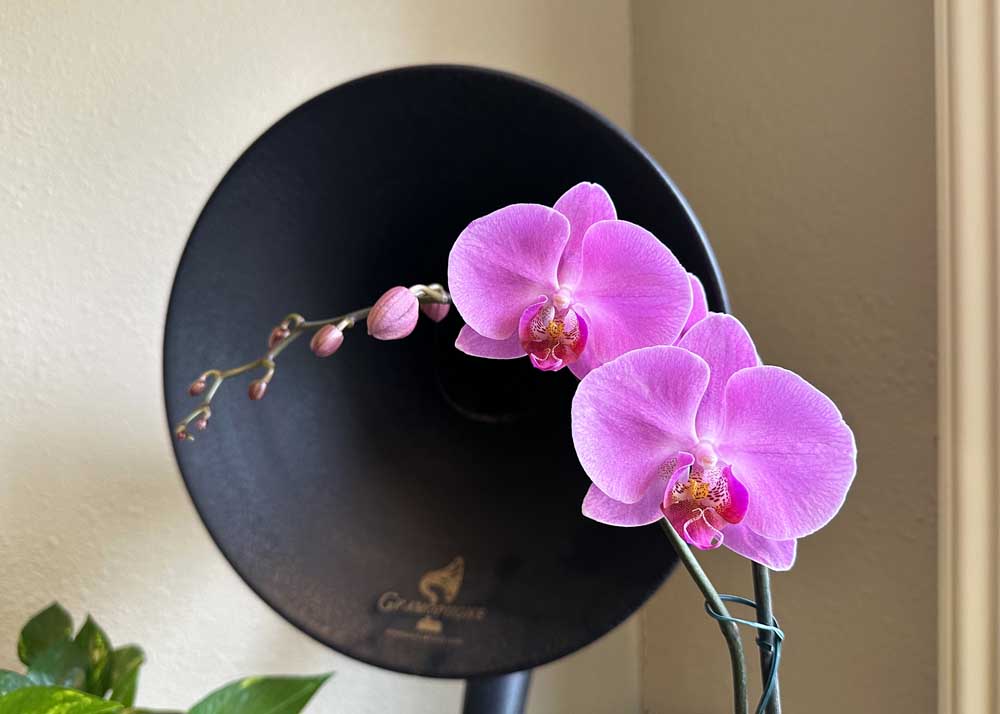Sperry: What’s that weed?
Published 5:10 am Sunday, August 18, 2024

- A Phalaenopsis orchid is commonly referred to as a “moth” orchid. This one is pictured in the Sperrys' sunroom. (Contributed Photo)
Dear Neil: What is this little weed? Could the nearby live oak tree be causing them? What can I use to eliminate them without harming my live oak?
You’re not going to be happy with my answer. The holly-like leaves are juvenile foliage of live oaks. That’s the way live oak seedlings look when they germinate. As the saplings grow taller their newer leaves develop the normal smooth edges. I fear, however, that these are not seedlings from acorns. These are probably sprouts coming up from the root system of the mother tree. If you dig down carefully you will most likely find each of them tethered to a larger root of the main tree. That means that any weedkiller you apply to the sprouts will be taken back to mama. If I’m wrong and you find an acorn and a taproot on each of the trees, you can carefully apply a broadleafed weedkiller (containing 2,4-D) with a trigger squeeze bottle to each seedling. But if I’m correct, your only safe means of getting rid of them is to remove them mechanically. That means sending a sharpshooter spade in at a 30-degree angle to sever each sprout 2 or 3 inches below the soil line. That would require that you rake the rocks back first, but it also would give you the option of putting a weed barrier down after you remove the sprouts and before you put the rocks back in place.
I know this is difficult to digest, but it’s a message I’ve had to deliver all my career. This happens with (my estimate) about 15 percent of our live oaks. Sadly, we don’t know which ones until they begin to gift us with the offspring.
Dear Neil: Attached is a photo of Virginia buttonweed in my lawn. I have several very large areas of this weed. In searching the internet, I found the recommendation that I must use a post-emergent spray applied mid-summer when temperatures are below 90F. It says that multiple applications may be necessary to eliminate it from my lawn. Is this information correct?
It sounds like a write-up I found several years ago by a colleague in Georgia. This is a tenacious weed. It’s made even more troublesome by the fact that its leaves look like St. Augustine, so it often gets a good start before we know we have it. The only thing I would question about using a broadleafed weedkiller in mid-summer would be that temperatures here in Texas are too hot for most of July and August. You could damage your St. Augustine. I think you’d get better results with less chance of damage if you were to spray in late May or June or if you waited until early to mid-September. I have also found good write-ups on LSU and Clemson websites.
Dear Neil: At my wife’s urging I had my pear tree “topped” by a guy with a bucket truck. No pears for three years. I trimmed some of the downward-growing branches over the past three years. Two months ago, it started showing pears. Some are starting to fall and they’re full sized. What caused them to form so early? Will they ripen if I leave them in the house for a week or two?
That’s a lot of questions that I’ve never been asked before. You should never top a pear tree. That stimulates vigorous new growth, and that kind of growth will be very susceptible to fire blight, the serious bacterial disease that turns tips of limbs, even entire branches black like they had been scorched by a fire. As for “early,” two months ago would be the beginning of summer and that would be quite late for pears to be forming. The flowers should have opened in late February or March and fruit should have become visible by March or early April. Whether they will ripen if left on a countertop only time will tell. Just leave them on newspaper for a couple of weeks and see how they develop. Good luck with them!
Dear Neil: My wife purchased a lovely orchid recently. It had about an 8-inch white bloom on one of the stems. Over a 6-week period the bloom shattered leaving a couple of bare stems about 10 inches tall. With proper care will it rebloom? What would that care be? Should we plant it outdoors to see if it will grow or maybe just buy another one?
I’m going to assume she bought a Phalaenopsis orchid, commonly referred to as a “moth” orchid. They are the ones you most commonly see in flower shops in nurseries, grocery stores, and floral design studios. White has become the most popular color, although they are commonly seen in various shades of pink and lavender as well. I’ve included a photo of a lavender one I just reflowered in our house for comparison.
They are among the easiest of all orchids for care indoors. Just don’t try to grow it in a bed outside. They need temperatures ranging from 60 to 85 degrees F., bright light but no direct sunlight in summer. In their native homes they grow suspended in trees, not in the ground. That means they need very porous planting media such as fine bark nuggets, coconut fiber, or a mixture containing lava rock.
I have grown as many as 8 or 10 at a time and had good results in getting them to rebloom the following year. The secret is patience. They grow slowly. You can’t speed them along. Fertilize them monthly with a diluted solution of a water-soluble, complete-and-balanced food. Keep their planting medium moist but not wet. Do not allow it to get dry for any extended period of time. They commonly bloom about the same time each winter, beginning with a nub of a new shoot and then a stem that will look like what you had with your flowers this time around. Remember to be patient!






